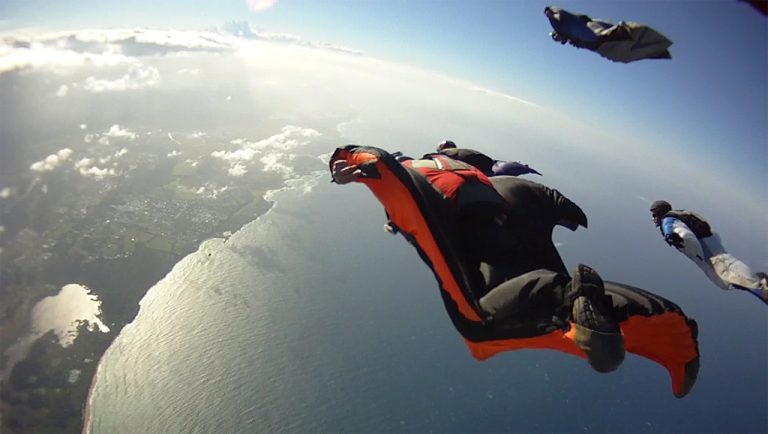General Rules of Ultralight Aviation
When it comes to ultralight aviation, the freedom of flight can be exhilarating, yet it comes with a set of crucial rules and guidelines that must be followed.
From weight restrictions to emergency procedures, each aspect plays a significant role in ensuring safety and compliance in the skies.
As you navigate through the intricacies of this fascinating realm, understanding these general rules will not only keep you secure but also enhance your overall flying experience.
Weight Restrictions
When considering weight restrictions in ultralight aviation, it's crucial to adhere strictly to the specified limits to ensure safe operation. Proper weight distribution plays a vital role in the overall performance of the aircraft. Uneven weight distribution can affect the stability and maneuverability of the ultralight, potentially leading to dangerous situations. By ensuring the weight is evenly distributed according to the manufacturer's guidelines, you can optimize fuel efficiency and enhance the overall flying experience.
Cargo restrictions are another critical aspect to consider when operating an ultralight aircraft. Exceeding the designated weight capacity for cargo can jeopardize the safety of the flight. It's essential to carefully assess the weight of any items being carried on board and make sure they fall within the approved limits. Adhering to cargo restrictions not only ensures the safety of the pilot and passengers but also contributes to the longevity of the aircraft.
In addition to weight distribution and cargo restrictions, implementing proper safety measures is paramount in ultralight aviation. This includes conducting pre-flight inspections, wearing appropriate safety gear, and following all operational guidelines. By prioritizing safety at all times, you can enjoy the freedom and thrill of ultralight flying while minimizing risks. Remember, a methodical approach to weight management and safety measures is key to a liberating and secure ultralight aviation experience.
Aircraft Maintenance
Properly maintaining your ultralight aircraft is essential for ensuring its longevity and safe operation. Regular engine inspections are crucial to identify any potential issues before they escalate. Checking for leaks, loose fittings, and worn-out parts can prevent unexpected failures during flight. It is recommended to follow the manufacturer's guidelines for maintenance schedules and procedures to keep your engine in optimal condition.
When it comes to propeller maintenance, inspecting it for cracks, erosion, and imbalance is vital. Any signs of damage should be addressed immediately to avoid performance issues and potential safety hazards. Balancing the propeller regularly can help extend its lifespan and ensure smooth operation during flights. Additionally, verifying the security of the propeller attachment to the engine is essential to prevent detachment mid-flight.
| Engine Inspection | Propeller Maintenance |
|---|---|
| Check for leaks, loose fittings, and worn-out parts. | Inspect for cracks, erosion, and imbalance. |
| Follow manufacturer's maintenance guidelines. | Address any signs of damage promptly. |
| Regular maintenance to prevent unexpected failures. | Balance propeller for optimal performance. |
Pilot Licensing
To ensure compliance with regulations and maintain safety standards, obtaining the necessary pilot licensing is a critical step for operating an ultralight aircraft. Before you can take to the skies, it's essential to meet specific license requirements. Ultralight pilot licenses often have less stringent requirements compared to traditional pilot licenses, but they still demand a good level of training.
Various training programs are available to help you gain the necessary skills and knowledge to operate an ultralight aircraft safely. These programs cover topics such as aircraft controls, aerodynamics, emergency procedures, and more.
In addition to completing training programs, you may also need to pass a medical exam to ensure you're fit to fly. While ultralight aircraft typically have less strict medical requirements compared to larger aircraft, it's important to ensure that you're in good health to operate the aircraft safely. Age restrictions may also apply, with most countries requiring ultralight pilots to be at least 16 years old. However, some regions may have different age limits, so it's crucial to check the specific regulations in your area.
Weather Conditions
Understanding and monitoring weather conditions is crucial for safe ultralight aviation operations. When preparing for a flight, you must pay close attention to factors such as wind speed, cloud cover, temperature, and visibility. Here is a breakdown of these key weather elements:
| Weather Element | Importance | Considerations |
|---|---|---|
| Wind Speed | High | Check for gusty winds |
| Cloud Cover | High | Be wary of thick clouds |
| Temperature | Medium | Monitor for extreme heat or cold |
| Visibility | High | Ensure clear visibility for safe flying |
Monitoring wind speed is vital as gusty winds can make it challenging to control your ultralight aircraft. Additionally, be cautious of significant cloud cover, which can obscure your vision and make navigation difficult. Temperature extremes can affect both the performance of your aircraft and your comfort during the flight. Lastly, maintaining good visibility is essential for safe flying, so always ensure you have clear visibility of your surroundings.
Airspace Regulations
As a pilot engaging in ultralight aviation, adhering to airspace regulations is paramount for ensuring safety and compliance during your flights. Understanding airspace navigation and following safety precautions are essential components of responsible flying. Airspace is categorized into different classes, each with specific regulations and flight restrictions to maintain order and safety in the skies.
Before taking off, familiarize yourself with the airspace regulations in your area. Different airspace classes have varying rules regarding altitude limits, communication requirements, and flight restrictions. It's crucial to plan your route carefully, taking into account any restricted or controlled airspace along the way.
When flying in controlled airspace, always communicate with air traffic control and follow their instructions diligently. This helps in avoiding potential conflicts with other aircraft and ensures a smooth and safe flight. Remember to check for any temporary flight restrictions or NOTAMs (Notices to Airmen) that may affect your route or altitude.
In addition to following airspace regulations, incorporating safety precautions into your flight routine is vital. Regularly checking weather conditions, maintaining your aircraft properly, and staying vigilant during flights all contribute to a safer flying experience. By adhering to airspace regulations and taking necessary safety measures, you can enjoy the freedom of ultralight aviation while prioritizing your well-being and that of others in the airspace.
Emergency Procedures
Navigating emergency procedures in ultralight aviation requires a thorough understanding of protocol and a readiness to act decisively in critical situations. In the event of an emergency, such as engine failure or severe weather conditions, knowing the proper protocols for an emergency landing is paramount. Pilots must be prepared to quickly assess the situation, determine the best course of action, and execute a safe landing to minimize the risk of injury or damage.
Before taking off, it's essential to ensure that all emergency equipment is on board and functioning correctly. This includes items such as a first aid kit, fire extinguisher, emergency locator transmitter (ELT), and survival supplies. Familiarizing yourself with the emergency equipment checklist and its location within the aircraft can save valuable time in high-stress situations. Regularly inspecting and maintaining this equipment is crucial for its reliability during emergencies.
During flight, stay vigilant and monitor the aircraft's performance closely. If you encounter an emergency, remain calm and refer to your emergency procedures checklist. Communicate clearly with air traffic control if possible, and follow their instructions as needed. Practice emergency landing drills regularly to ensure you can react swiftly and effectively when faced with unexpected challenges. Remember, preparation is key to handling emergencies in ultralight aviation safely and confidently.
Passenger Limitations
Passenger restrictions in ultralight aviation are crucial for maintaining safety and compliance with regulations. When it comes to carrying passengers in an ultralight aircraft, certain precautions must be taken to ensure a safe and comfortable flight experience. Here are some essential points to consider:
- Safety Precautions: Before taking off, ensure your passengers are briefed on important safety measures. This includes how to fasten their seatbelts properly, emergency procedures, and what to do in case of unexpected situations. Safety should always be a top priority to guarantee a secure journey for everyone on board.
- Cabin Comfort: While ultralight aircraft may have limited cabin space, it's important to ensure passengers are seated comfortably. Make sure they've enough legroom and can access any necessary equipment or controls easily. Comfortable passengers are more likely to enjoy the flight and follow safety instructions attentively.
- Weight Distribution: Proper weight distribution is critical for maintaining the stability and control of the aircraft. Brief your passengers on where to sit to balance the weight effectively. Incorrect weight distribution can affect the aircraft's performance and handling, potentially compromising safety.
Flight Planning
When preparing for an ultralight aviation journey, meticulous and thorough flight planning is essential to guarantee a safe and efficient trip. Fuel efficiency is crucial in ultralight aviation, so optimizing your route is paramount. Start by calculating the distance of your journey and then consider factors like wind direction and speed to determine the most fuel-efficient path. Utilizing navigation techniques such as GPS systems or traditional maps will aid you in plotting the optimal course.
Communication protocols are another critical aspect of flight planning. Before takeoff, ensure you have a clear understanding of the frequencies and procedures for contacting air traffic control or other aircraft in your vicinity. Stay updated on weather conditions along your route to make any necessary adjustments promptly. In case of emergencies, knowing how to communicate distress signals effectively is vital for your safety.
Create a detailed checklist covering all aspects of your flight plan, including pre-flight checks, emergency procedures, and alternative landing sites. Incorporate regular checkpoints into your route plan to track your progress and make adjustments as needed. By meticulously planning your flight with a focus on fuel efficiency, route optimization, navigation techniques, and communication protocols, you can ensure a safe and efficient ultralight aviation journey.
Frequently Asked Questions
What Are the Benefits of Using Ultralight Aircraft Compared to Traditional Aircraft?
When thinking about the benefits of ultralight aircraft versus traditional ones, consider this: ultralights can be up to 20 times more fuel-efficient. With their superior maneuverability, lower environmental impact, and cost-effectiveness, they offer a liberating flying experience.
Can Ultralight Aircraft Be Used for Long-Distance Flights?
Yes, you can use ultralight aircraft for long-distance flights. They offer excellent fuel efficiency and surprisingly good long-range capabilities. However, safety measures and endurance limits must be carefully considered to ensure a successful journey.
Are There Any Specific Medical Requirements for Pilots Flying Ultralight Aircraft?
Thinking of flying ultralight? Wondering about medical requirements? Pilots of ultralight aircraft typically don't need medical certifications. Fitness requirements are minimal, but some exemptions exist for certain conditions. Enjoy the freedom of the skies!
How Do Ultralight Aircraft Handle in Different Weather Conditions, Such as Strong Winds or Turbulence?
In different weather conditions, ultralight aircraft handle wind with agility, adjusting to turbulence with grace. The challenges of varying weather test flight stability, but ultralights respond effectively, offering a thrilling yet controlled experience.
Are There Any Age Restrictions for Individuals Looking to Fly Ultralight Aircraft?
Age restrictions for flying ultralight aircraft vary, with most countries setting a minimum age of 16. Training requirements are crucial, ensuring safety and competence. Before taking to the skies, undergo proper training to enjoy this liberating experience.






